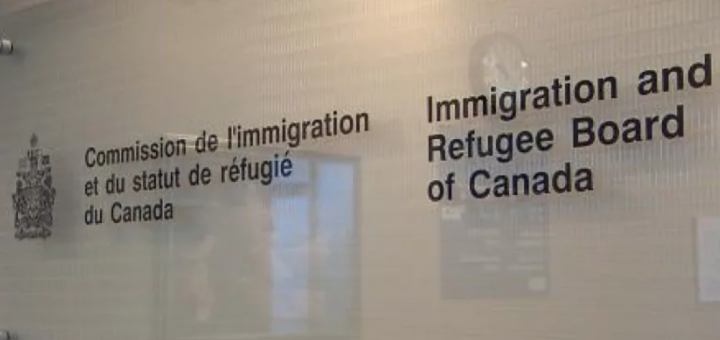Feher v Canada: Strike Three Against the “Safe Country” List in Canada’s Refugee Law

Until late March 2019, when Justice Keith Boswell struck down s.112(2)(b.1) of the Immigration and Refugee Protection Act, SC 2001, c 27 [IRPA], refugee claimants from certain “designated” countries were required to wait for two years longer compared to all other refugee claimants for a risk assessment of their removal from Canada. Two weeks ago in Feher v Canada (Minister of Public Safety and Emergency Preparedness), 2019 FC 335 [Feher], Justice Boswell ruled that s.112(2)(b.1) discriminated against applicants from such “designated” countries on the basis of national origin compared to applicants from non-designated countries. In particular, he found that s.112(2)(b.1) was discriminatory based on national origin contrary to s.15(1) of the Canadian Charter of Rights and Freedoms [Charter], not justified under s.1, and therefore, of no force and effect immediately.
Between 2010-2012, Canada introduced reforms to its immigration and refugee laws to speed up the way refugee claims are processed. Canada designated certain countries as “safe” and relatively unlikely to produce refugees and amended its laws to subject the refugee claimants from these countries to a different process. Applicants from “designated” countries were excluded from accessing medical care pending the resolution of their claim, could not obtain employment, and did not have many of the procedural protections guaranteed to all other refugee claimants. The legislation aimed to inhibit “bogus” refugee claims and reduce waiting times in the system. However, Justice Boswell’s decision in Feher marks the third time that the Federal Court has struck down aspects of the Designated Country of Origin (“DCO”) scheme enacted in 2012 as unjustifiably contrary to equality guarantees under the Charter.
This case comment analyzes the Feher decision in the context of the DCO regime. It also elaborates on the widespread criticism of the DCO designation process for lacking clear and precise criteria for designation and for being inconsistent with Canada’s international obligations for refugee protection which oblige Canada to assess refugee claims on an individual basis.
The Legislative Context of the Designated Country of Origin (DCO) Regime
Under the IRPA as it was first enacted, all refugee claimants who had enforceable removal orders pending against them were entitled to a pre-removal risk assessment (“PRRA”) if they alleged a risk of torture or risk to life or cruel treatment following removal from Canada. The assessments were a last-stop measure to ensure that refugee claimants were not deported into dangerous and life-threatening conditions. The original provisions in s.112(2) of the IRPA contained no time limitation on when claimants could make a PRRA application (Feher, para 19). However, after the Canadian government concluded that the immigration and refugee system in Canada had become backlogged, inefficient, and in need of reform, the Canadian government introduced amendments to the IRPA in 2010.
Canada’s stated aim in introducing the IRPA amendments was to speed up the processing of refugee claims and to inhibit “bogus” claims from slowing it down. In 2010, it enacted a revised s.112(2)(b) of the IRPA, which prohibited any person who had previously applied for a PRRA which was rejected, abandoned or withdrawn from applying for a new risk assessment for at least 12 months (Feher, para 20). In 2012, in a further measure, Canada introduced a different process for countries deemed “safe” and unlikely to produce refugees: the DCO regime. Countries designated as safe under the DCO regime include, for example, the United States and all EU countries except Bulgaria and Romania. Claimants from these countries were to be subject to a different process than claimants from non-DCOs.
S. 112(2)(b) of the IRPA, which bars refugee claimants facing removal from Canada from seeking another risk assessment for 12 months following an unsuccessful or abandoned claim, was also amended in 2012. The amendment introduced a new exception. Under s.112(2)(b.1), refugee claimants from DCOs were now prohibited from seeking a new PRRA for 36 months following an unsuccessful, withdrawn, or abandoned claim. In effect, while for the first 12 months, all unsuccessful refugee claimants were equally banned from submitting a new PRRA application, s.12(2)(b.1) subjected refugee claimants from DCOs to an additional waiting period of two years.
The amendments in the IRPA included other procedural differences between DCO and non-DCO claimants. For example, non-DCO nationals are entitled to a work permit while awaiting a PRRA decision, while DCO nationals are not. Equally, non-DCO nationals benefit from a stay of removal while they wait for a PRRA decision to be made, whereas DCO-nationals may be removed from Canada before any decision is made regarding a new PRRA. Finally, a non-DCO national need only show more than “a mere possibility” that their removal would expose them to persecution or risk in order to be successful on a PRRA application. Meanwhile, DCO national needs to show on a balance of probabilities that removal would expose them to death, extreme sanction, or inhumane treatment in order to be successful on a deferral request (Feher, para 188).
As mentioned, courts have previously struck down aspects of the DCO regime as inconsistent with s.15(1) of the Charter. In Canadian Doctors for Refugee Care v Canada (AG), 2014 FC 651 [Canadian Doctors], Justice Mactavish found that the restrictions on access to health care for DCO claimants violated s.15. In Y.Z. v Canada (Citizenship and Immigration), 2015 FC 892 [Y.Z.], Justice Boswell found that the denial of access to appeals at the Refugee Appeal Division (“RAD”) for refugee claimants from DCOs, a restriction that non-DCO applicants were not subjected to, was also a violation of s.15 of the Charter.
The Facts and Evidence in Feher
Hungary has been designated under the DCO regime since the regime was enacted in 2012. In Feher, Justice Boswell considered whether a group of refugee claimants from Hungary, who were all of Romani descent, were discriminated against contrary to s.15 equality guarantees. All had been subject to enforceable removal orders from Canada and had applied for risk assessments, but were subjected to a 36-month waiting period, compared to the 12-year period for refugee claimants from non-DCO countries.
The applicants argued that the purpose and effect of s.112(2)(b.1) of the IRPA was to single out all DCO nationals, based solely on their nationality, from the pool of unsuccessful refugee claimants and to deny them access to a PRRA for a further 24 months. The Canadian government argued that s.112(2)(b.1) was a recognition of “the [different] conditions existing within a country” (Feher, para 211), and was not about nationality. The government put forward that DCOs were countries that respected human rights, offered state protection, and normally did not produce refugees (Feher, para 214), and that classifying countries based on distinctions in the social, political, and economic conditions existing within them did not “perpetuate prejudice or stereotyping on the grounds prohibited in section 15(1) of the Charter” (Feher, para 211).
S. 109.1 of the IRPA governs how a country is designated and establishes quantitative and qualitative “triggers” for designation (Feher, para 214). The quantitative triggers include a statistical evaluation of how many claims from a given country are abandoned, withdrawn, or found genuine in Canada. The qualitative triggers examine whether the country has an independent judicial system, affords democratic rights and freedoms guaranteed by mechanisms for redress, and ensures space for civil society organizations (Feher, para 214). While there is no express provision set out in the IRPA for removing a country’s designation, a process for doing so was established in 2014. The process involves monitoring all DCOs for significant deterioration in country conditions, but in practice no DCO has thus far been un-designated (Feher, para 25).
At trial, aside from evidence produced by the applicants themselves, who all claimed discrimination based on their Romani ethnicity and their Hungarian nationality based on s.112(2)(b.1) of the IRPA, the applicants led expert evidence on stereotyping and discrimination in Canada’s immigration and refugee system. The evidence included research by professors from Osgoode Hall Law School, Sean Rehaag and Janet Mosher.
The expert evidence included academic research that presented evidence of prejudice against people of Romani descent within Canada’s immigration system, both current and historic, as well as a historic tendency of Canada’s immigration system to single out and exclude groups of people. Research also suggested that perceptions of a “safe” country drove perceptions that claimants from these countries presented “bogus” refugee claims. In turn, these perceptions created stereotypes against claimants and pushed them out of Canada’s immigration system (see Feher, para 103). Professor Mosher attached as exhibits to her affidavit the speaking notes of former Minister of Citizenship and Immigration, Jason Kenney, announcing amendments to Canada’s immigration and refugee legislation, in which he suggested that refugees from certain countries were “bogus claimants” (Feher, paras 104, 201-205).
The applicants argued that the “blanket tarring of DCO nationals as being frauds and cheats had a punishing impact on the dignity of the individual Applicants” in the case (Feher, para 202). They argued that instead of “using a surgical tool to target non-meritorious claims” such as an extended PRRA bar for refugee claims found to be manifestly unfounded or having no credible basis, Parliament instead chose to use nationality as a substitute (Feher, para 207).
In response, the government presented expert evidence of EU-level programs from 2010 aimed at redressing historical marginalization of Roma people, the free movement of people within the EU as an alternative to seeking protection abroad, and conditions in Hungary meeting EU values and rule of law principles, including prohibitions on ethnic discrimination. One of the expert witnesses for the Canadian government noted, however, that “EU asylum applications will be declared inadmissible and will not be considered, unless there are exceptional circumstances” (Feher, para 112).
Although the government sought an order to strike all or parts of eight affidavits filed by the Applicants on the grounds that they were irrelevant, unnecessary or contained improper opinion evidence (Feher para 46), Justice Boswell denied the application and found no prejudice.
S. 112(2)(b.1) of the IRPA: Charter Infringement or Recognition of Country Conditions?
The test for whether an infringement of Charter s.15(1) is set out in Centrale des syndicats du Quebec v Quebec (Attorney General), 2018 SCC 18 [Centrale des syndicats], where Justice Abella explains: “[w]hen assessing a claim under s.15(1), […] jurisprudence establishes a two-step approach: Does the challenged law, on its face or in its impact, draw a distinction based on an enumerated or analogous ground, and, if so, does it impose ‘burdens or [deny] a benefit in a manner that has the effect of reinforcing, perpetuating or exacerbating […] disadvantage’, including ‘historical’ disadvantage?” (Centrale des syndicats, para 22).
At the first step of the analysis, Justice Boswell had little difficulty answering in the affirmative (Feher, paras 240-246), concluding that “the differential treatment in paragraph 112(2)(b.1) is clearly a distinction based on the national origin of a refugee claimant [because] [i]f the claimant comes from one of the countries designated under ss. 109.1(1) of the IRPA, he or she will be without the potential benefit of a PRRA until 36 months have passed since their claim […] was last rejected or determined to be withdrawn or abandoned” whereas in contrast, claimants from non-DCO countries were only required to wait 12 months (Feher, para 246).
The submissions regarding how states are designated as DCOs played a major role in Justice Boswell’s conclusion. First, Justice Boswell found that “it is not persuasive that the DCO regime is a proxy for safety” (Feher, para 248). In 2014, for example, 57.3% of Hungarian claims were accepted at the Refugee Protection Division, an acceptance rate higher than that of some of the non-DCO countries such as Angola (44.4%), Burundi (54.2%), China (52.7%), the Democratic Republic of the Congo (46.7%) and others (Feher, para 248). Second, he found that the decision to designate a country as “safe” was made without regard to individual claimants, or “without regard to a claimant’s personal characteristics or whether that country is safe for them” (Feher, para 249). Third and finally, Justice Boswell noted that there is no express provision for de-designating a country, and that, while a policy is in place that allows the Minister to remove a country’s designation, “[a]ll that means is that the Minister could stop drawing distinctions based on national origin in the future, and claimants have no control over when that might be” (Feher, para 250).
At the second step of the s.15 infringement test, Justice Boswell found that s.112(2)(b.1)’s discrimination based on national origin does create a disadvantage by perpetuating prejudice or stereotyping. He noted the evidence of the Canadian government that one of the aims of the DCO regime was to deter abuse of the system by “non-genuine claims” (Feher, para 253). The DCO regime creates a presumption that refugee claimants from some countries which are generally considered safe and “non-refugee producing” are likely to be “bogus claimants” (Feher, para 254). He concluded that “persons directed affected by paragraph 112(2)(b.1) undoubtedly include many claimants who are not abusing the system or making bogus claims” (Feher, para 254).
Conclusion
DCO claimants face inferior procedural safeguards compared to non-DCO refugee claimants. With Feher, the Federal Court has now struck down three aspects of the DCO regime: the provision against DCO claimants from accessing healthcare in Canadian Doctors, the provision against DCO claimants’ access to the Refugee Appeal Division (RAD) in Y.Z., and DCO claimants’ longer waiting period for a pre-removal risk assessment in Feher.
The main problem with the DCO regime is that it sits in tension with Canada’s obligations under international law to assess refugee claims on an individual basis. Although all refugee claimants in Canada have access to an assessment process, the DCO scheme prejudges claims according to set criteria (nationality) in a procedure that does not focus on the individual. The DCO regime then streamlines claimants into an inferior assessment process. At the same time, a significant number of countries that have been designated as “safe” by the DCO regime fail to protect the human rights of minority groups, including ethnic groups and members of the LGBTQ community, while refugee protection within the EU by nationals of EU countries are sometimes difficult to obtain. Although some provisions of the DCO regime have now been struck down, other aspects of the regime remain, such as the inability to work in Canada until a DCO claimant has been in the country for 180 days (s 206(2) of the IRPA), and the lack of a statutory stay of removal pending a judicial review of a Refugee Appeal Division decision in Federal Court. Time will tell whether these aspects of the DCO regime will also become subject to judicial scrutiny.







Join the conversation